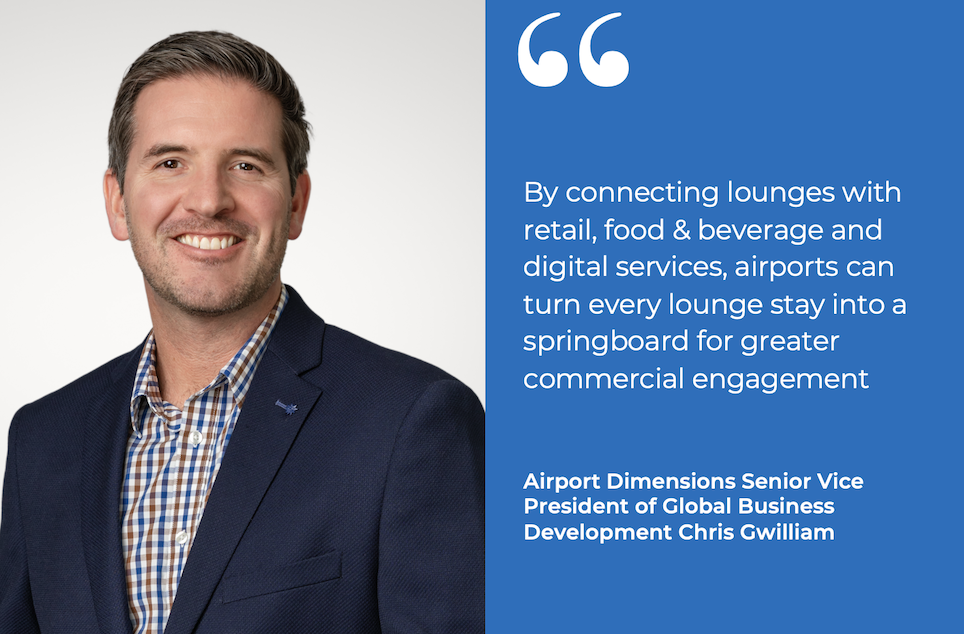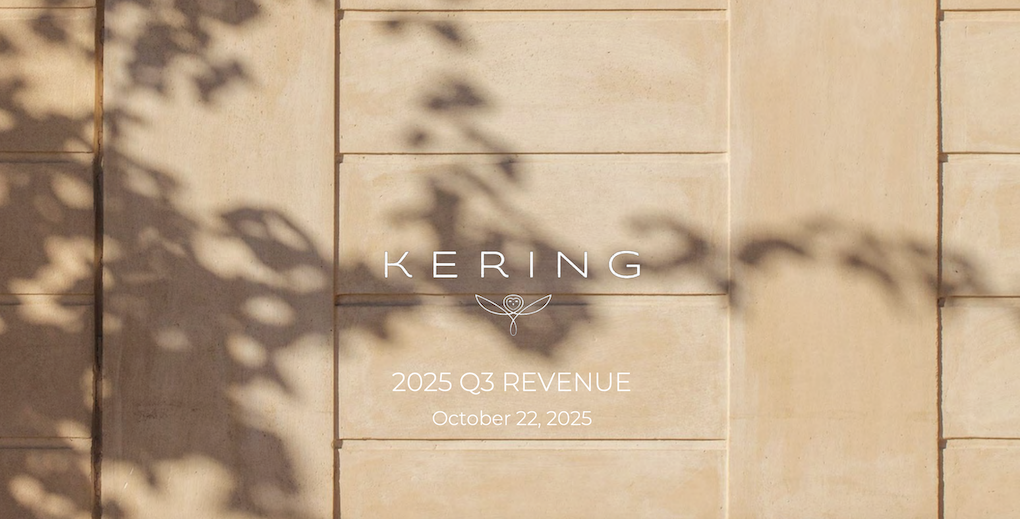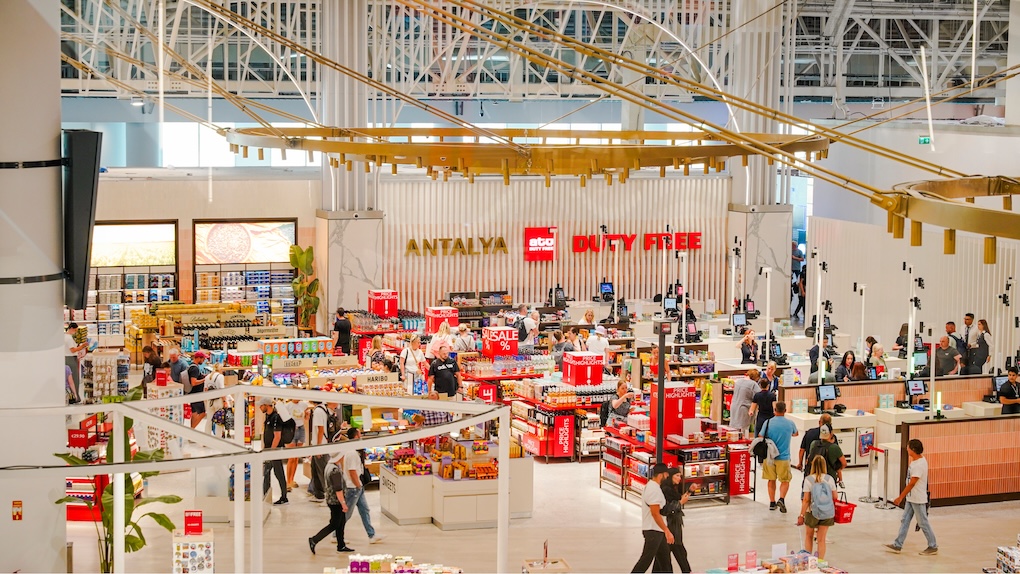In this guest article, Airport Dimensions Senior Vice President of Global Business Development Chris Gwilliam comments on how lounges should be viewed as a core element in airport commercial infrastructure.
The role of airport lounges within the wider airport ecosystem has transformed in recent years. No longer reserved for the elite few, they are now integral to driving passenger experiences and satisfaction throughout the airport journey.
Democratisation of access through financial service programmes such as credit card perks, along with heightened passenger expectations for premium services, means lounges are now a strategic asset which benefit wider airport stakeholders. Ultimately, they drive revenues across the airport by attracting high-value travellers.

To fully unlock this potential, airports and their commercial partners should view the lounge’s function not as a separate entity, but as a central, integrated part of the broader commercial infrastructure.
Lounges drive indisputable value
For the modern traveller, lounge access is no longer a luxury but an essential part of the airport experience. Our latest Airport Experience Research, which surveyed over 10,000 frequent travellers who have taken 2+ return trips over the past 12 months, shows just how deeply valued lounges have become.
Among members of lounge access programmes, access is a non-negotiable expectation – an overwhelming 97% state that not having lounge access is simply “not an option”.

This level of loyalty carries real weight. Nearly half (45%) would even consider switching their bank if the lounge benefit were removed. Lounges are no longer seen as a bonus or an upgrade – they are a fundamental expectation. At Airport Dimensions, we’ve seen first-hand how lounges drive higher passenger satisfaction, loyalty and commercial spend, making them a true ‘killer benefit’ of the airport journey.
This value translates directly to the airport’s bottom line. Travellers who use lounges are demonstrably happier with their entire airport journey. For instance, members of Priority Pass are 88% satisfied with the airport overall [Airport Experience 2025 research] – a testament to the power of lounges to elevate the travel experience.
Lounges attract and serve an airport’s most commercially valuable customers. Affluent Leisure Travelers (ALTs) represent a high-value segment: they travel more frequently, spend significantly more than the average traveller and prioritise access to premium experiences like airport lounges.
This group accounts for an incredible 81% of total traveller airport spend [Airport Experience 2025 research]. By providing a premium environment that caters to these high-spend passengers, airports create a halo effect, encouraging greater engagement and spend across all terminal concessions. The lounge acts as a gateway, priming high-value customers for further commercial interaction.
Integration, not isolation
Despite their demonstrable value, many lounges still operate in isolation from the wider airport ecosystem. Yet the real opportunity lies in integration. By connecting lounges with retail, food & beverage and digital services, airports can turn every lounge stay into a springboard for greater commercial engagement.

The key to unlocking this potential is technology. As airports adapt to shifting traveller expectations, the digital experience can no longer be an afterthought. More than half of global travellers now expect a unified interface that brings together wayfinding, shopping and service access in one place.
At Airport Dimensions, we’ve responded by developing Connecta, a unifying digital platform that integrates lounges, retail and services.
Through Connecta, passengers can, for example, order food for gate delivery, pre-purchase duty free items for collection or book other airport services. The platform integrates airport commerce and services into a single, seamless digital journey, offering real-time operational insights, enabling airports to deliver more personalised, profitable journeys from end to end.
This model directly addresses a significant gap in the market. By making these services accessible for travellers from the moment they arrive and embedding them within the lounge environment – a place where relaxed, high-value passengers are a captive audience – airports and concessions can significantly increase uptake and drive incremental value.
Lounges as strategic growth platforms
Forward-thinking airports are already recognising that lounges are more than just leased real estate; they are brand differentiators and powerful platforms for commercial growth. As technology continues to unify the passenger journey, from home to gate, the lounge becomes a critical touchpoint for personalised engagement.
By leveraging data, airports and their partners can deliver tailored experiences directly to passengers in the lounge. An AI-driven platform can offer promotions based on a traveller’s purchase history, flight destination or dwell time.
Imagine offering a discount on sunscreen to a passenger flying to a tropical destination, or promoting a last-minute souvenir from a local artisan. These are the kinds of value-driven digital experiences that will build loyalty and encourage spending.
Ultimately, the stakeholders that embrace collaboration and integration will lead the next wave of airport innovation and profitability.
By viewing the lounge as the central node in a connected ecosystem, airports can create a dynamic commercial environment where the lounge experience flows seamlessly into retail, dining and other services.
This holistic approach not only meets the expectations of the modern traveller but also unlocks new, sustainable revenue streams, ensuring the airport remains a vibrant and competitive commercial space for years to come. ✈














